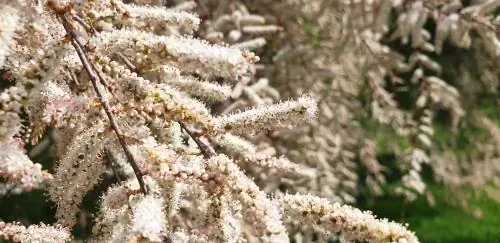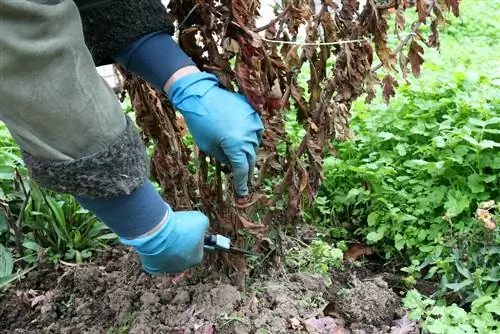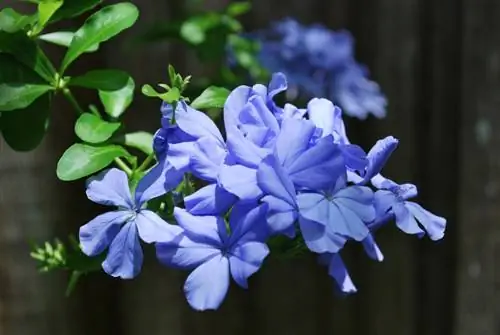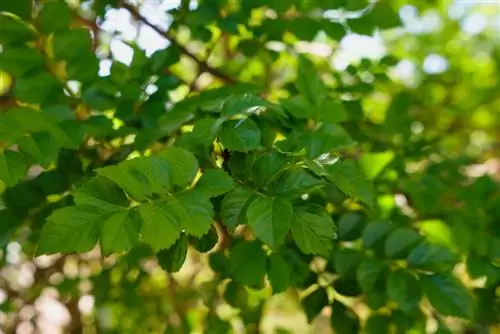- Author admin [email protected].
- Public 2023-12-16 16:46.
- Last modified 2025-06-01 06:02.
A tamarisk does not depend on regular cutting in order for opulent flower magic to unfold. If you order the picturesque ornamental tree to be pruned, it depends on the right time. Read this guide to find out when and how to blend spring and summer tamarisks perfectly.

When and how should you prune a tamarisk?
A spring tamarisk should be pruned after its blooming period, while a summer tamarisk can be pruned in February or March. Remove dead wood, damaged and balding shoots, shorten excessively long branches and cut back the oldest ground shoots from the fifth year onwards.
Flowering time dictates cutting time
The magnificent tamarisk genus provides us with spring-flowering and summer-flowering varieties for imaginative garden design. Spring tamarisks (Tamarix parviflora) shine in their pink and white flowers from May to June. Summer tamarisks (Tamarix ramosissima) decorate the bed and balcony with their picturesque flower clouds from July until well into autumn. The respective flowering time determines when you cut the flowering bush:
- Pruning spring tamarisk after flowering
- Cut summer tamarisk in February/March
It is characteristic of the spring tamarisk that it produces its flower buds the previous year. If the ornamental tree is cut in late winter, almost all of the buds fall victim to the scissors and the longed-for flower magic is lost. The summer tamarisk, on the other hand, takes its time with bud formation until the start of this year's season, so you can save the date for a cut for February/March.
Cutting tamarisk optionally - instructions
Annual pruning care is not mandatory so that the pink and white flower clouds of a tamarisk transform the garden into a fairyland. It is up to your horticultural judgment whether you thin out the flowering bush or cut it into shape. It's good to know for beginners in tree pruning that thanks to the tamarisk's good-natured pruning tolerance and rapid growth rate, one or two beginner's mistakes can be corrected in no time. The following cut has proven to be excellent in gardening practice:
- In the first step, cut out dead wood, damaged, bald and cross-growing shoots
- Cut back excessively long, drooping branches to the desired length
- Clean out wilted flower spikes if necessary
- Cut 3-5 mm above a bud or pair of leaves
In the interests of continuous rejuvenation, we recommend cutting off one or two of the oldest ground shoots at the base from the fifth year onwards. As a replacement, select the most promising candidates from young ground shoots. Cut off all remaining shoots at ground level so that the tamarisk can grow loosely and flooded with light. If space in the bed or pot allows, the flowering shrub is very well positioned with a framework of five to twelve ground shoots.
Use clippings as cuttings
The cuttings of a tamarisk contain numerous candidates for propagation by cuttings. Choose 15 centimeter long, half-woody shoot tips without flower buds. This has the potential to become another tamarisk for creative garden design. Defoliate the bottom half of a cutting and plant it in a pot with lean, well-drained soil.
Tip
With a growth height of up to 5 meters, a tamarisk looks perfect as a house tree. In order to train the pretty flowering shrub into a standard tree, the time window is open from October to March. The strongest ground shoot is chosen to become the trunk. Below the desired crown base, saw off all side branches on Astring.






